#ROSITA QUIROGA
Explore tagged Tumblr posts
Text
Venezuela India Mexico
Here are 3 cds of mp3 compilations of world music mainly from Mexico & South America with a dash from India & Senegal. I have a friend from Venezuela & so I downloaded Los Amingos Invisibles: Super Pop (2005) by this band from Venezuela. It’s a set covers of Venezuelan pop songs from the ’60s to the early ‘90s by a band considered to have the greatest international recognition. Pop but with…

View On WordPress
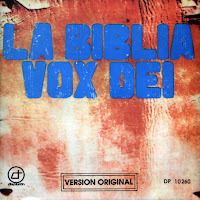
#album-review#am writing#Argentina#Brazil#Cuba#Fabio Antierio Pedalino#India#Los Amingos Invisibles#Luis Silva#Malon#Mexico#Moreno Veloso#music#Ontario#photographs#review#reviews#Rohan Patel#Rosita Quiroga#Salim-Sulaiman#Toronto#Toure Kunda#Venezuela#Vox Dei#X-Alfonso
4 notes
·
View notes
Text
La Aventura del Tango: Mujeres del Tango(II)
ANTONIO PIPPO PEDRAGOSA. Periodista, Escritor, Editorialista. Director Gral. Cultura Tanguera. Columnista Fue llamada en la Argentina “la dama del tango” –calificativo que los uruguayos aún usamos para referirnos a Olga del Grossi, que bien merecido lo tiene- y, según un amplio consenso entre entendidos, fue la mejor cancionista de todos los tiempos: Mercedes Simone (1904 – 1990) también probó…

View On WordPress
#ACTRICES Y CANTANTES#ANTONIO PIPPO PEDRAGOSA EL MEJOR DEL 2023#Argentina#CULTURA TANGUERA#LA AVENTURA DEL TANGO#LA DAMA DEL TANGO#lomasleido#lomasvisto#MERCEDES SIMONE#MUJERES DEL TANGO II#OLGA DELGROSSI#ROSITA QUIROGA#SUSANA RINALDI#URUGUAY
0 notes
Text
La masa sonora
Atesorado en su archivo personal, custodiado por Guido Herzovich desde el fallecimiento, en 2019, esperan más proyectos como estas voces bárbaras que van desde Rosita Quiroga a Natalia Ginzburg, y otras menos esperables, como José Saramago y Antoine de Saint-Exupéry. Leer más

View On WordPress
0 notes
Text
Un sábado más para Chico Novarro
Un sábado más para Chico Novarro
Bernardo Mitnik, mejor conocido como Chico Novarro nació el 4 septiembre de 1933 en Santa Fe, hijo de Albert Mitnik de oficio zapatero proveniente de Ucrania y de Rosa Lerman de origen judío-rumano llegaron a la Argentina en 1923, huyendo de la Primera Guerra Mundial. Su padre apreciaba mucho el tango y conservaba consigo algunos discos de Carlos Gardel, Rosita Quiroga y Francisco Canaro y…
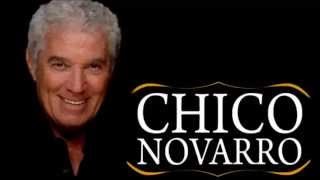
View On WordPress
#Argentina#Buenos Aires#Carlos Gardel#Córdoba#Chico Novarro#Francisco Canaro#Luna Park#Nicolino Locche#Rosita Quiroga#Tango#Un sábado más
0 notes
Video
youtube
1 note
·
View note
Text
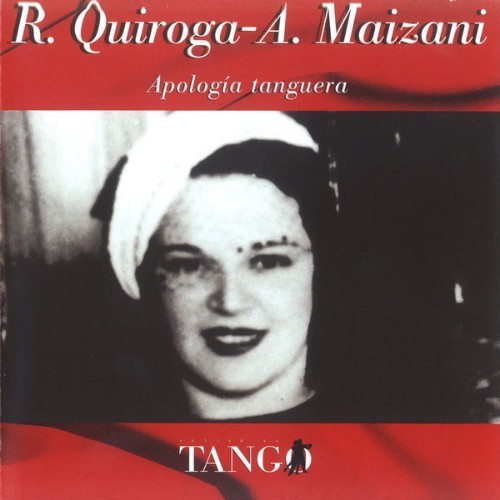
Rosita Quiroga - Apología Tanguera - 1998 https://flacsdb.com/threads/rosita-quiroga-apologia-tanguera-1998.30815/?utm_source=dlvr.it&utm_medium=tumblr
0 notes
Video
youtube
Cortita y al pie... Dos grandes del tango:
Rosita Quiroga (compositora de Apología Tanguera) Roberto Grela (histórico guitarrista de tango)
0 notes
Audio
Rosita Quiroga fue la primera cantora, heredera directa de los primitivos payadores. El suyo es un caso único en la historia de la mujer en el tango. Ninguna se expresó como ella, cantaba con la misma cadencia y el mismo dejo con el que hablaba, fue el prototipo femenino —irrepetible— de lo arrabalero. Interpretaba naturalmente, como le salía, y pulsaba la guitarra por tonos, tal como le enseñara Juan de Dios Filiberto su vecino en el barrio de La Boca.
0 notes
Text
XXIII: 1923
On Irreducibile Particles, Rapid Assimilations, and Molasses Funks
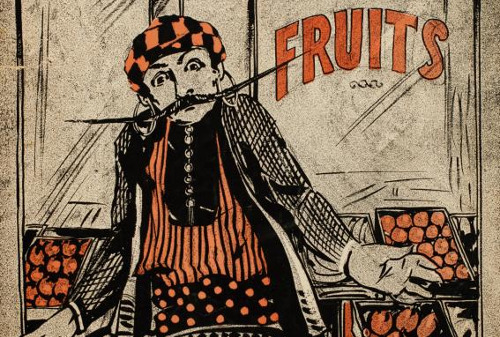
1. Billy Jones: “Yes! We Have No Bananas”
One of the four or five irreducible particles of the silliness of the Roaring Twenties, the folly of the années folles, the glitter of the Goldene Zwanziger, the keynote and image of all that was evanescent and soon to vanish, like champagne bubbles, in the era to come. A vaudeville routine sold as a Tin Pan Alley ditty, with a stop-start melody and nonsense refrain that captured a bluff, jaunty mood and lent itself to repetition, sawing relentlessly away with or without the lyrics kidding the incomplete Americanisms of the Lower East Side. But that kidding remains, a none too subtle reminder that the white majority would never consent to seeing immigrants as fully human. Nonsense in the United States is always political; perhaps that too is not unique to us.
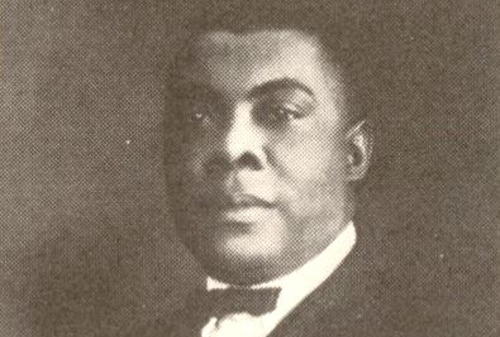
2. Clay Custer: “The Rocks”
The consensus among jazz scholars is that Clay Custer is most likely a pseudonym for the tune’s composer, but there are a few other Chicago-area pianists it could be, including his brother Hersal. Regardless, it’s the first disc on record to feature a walking bassline (so early in its development that it’s almost a stumbling one); this, combined with the previous year’s publication of “The Fives” from the same pen, is the birth of boogie-woogie piano. By decade’s end, the genre will have been fully formalized by pianists who all point to the work of Arkansas-born, New Orleans-trained, Chicago-adopted “Gut Bucket” George Washington Thomas as fundamental. Even apart from the all-important bassline, the chromatic opening trills and development of its themes—the rocks could be wave-dashed, or more euphemistic—give delight.
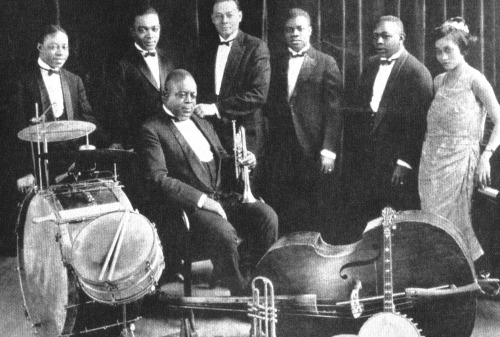
3. King Oliver’s Creole Jazz Band: “Dipper Mouth Blues”
Seven years is a long time in pop, which hot jazz still is. The gap between the Original Dixieland Jass Band’s first recordings and the first sides made by Joe “King” Oliver’s band—who would undoubtedly have been one of the ODJB’s primary inspirations back when New Orleans was the quarantined heart of jazz, before it spread like a virus to infect the entire nation—would have been noticeable in any era, but a comparison between the two reveals that while the white boys got the energy and the raucousness right, they missed the funk and the communal interplay. Oliver’s muted trumpet solo isn’t just virtuosity: it responds to and is responded to by the rest of the band, including the young second cornettist, recently arrived to Chicago from New Orleans.
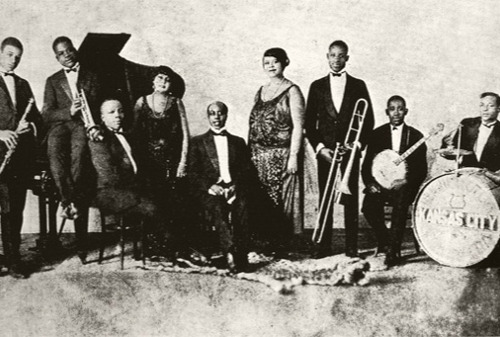
4. Bennie Moten’s Kansas City Orchestra: “Elephant’s Wobble”
And just as the first true New Orleans jazz is waxed, so too is the first true Kansas City jazz: less molasses funky, more brightly riffed, with a hard-stomping rhythm that presages much industrialized pop to come, from Motown to techno. Bennie Moten, a nearly thirty year old pianist, composer and now bandleader who had knocked about the Missouri ragtime scene since his youth, scored his first recording date in St. Louis, with a band of Kansas City luminaries who individually hearken back to older forms, from Sousa’s drilled marches to Joplin’s ragtime of theme and recapitulation to Ossman’s savagely strummed minstrel banjo: but together, powered by the newly hot-running engine of jazz, they produce a gleeful, entirely modern sound that piledrives, lean and hungry for rhythm, into the future.
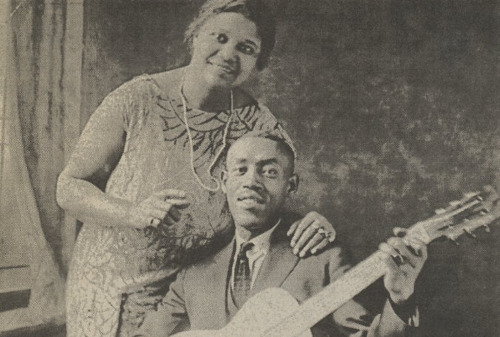
5. Sylvester Weaver: “Guitar Blues”
Most discographies will note this as the first country blues record; but Sylvester Weaver was born and reared in Louisville, Kentucky, which if it wasn’t a New York-scale metropolis was still no dirt-road waystation; nor is it the Deep South. Like most of his Black peers making their way before recording horns in the years before the electric-recording boom, Weaver was an urban entertainer—his first recordings were as an accompanist to blues singer Sara Martin. His instrument was called a “guitjo,” a banjo body strung like a guitar, and his slide technique sounds particularly otherworldly on its resonant body. The technique has appeared before, as played by Hawaiʻian musicians and white southerners; but here the sound connects (on record) to the blues, and the echoes from it will be lasting.
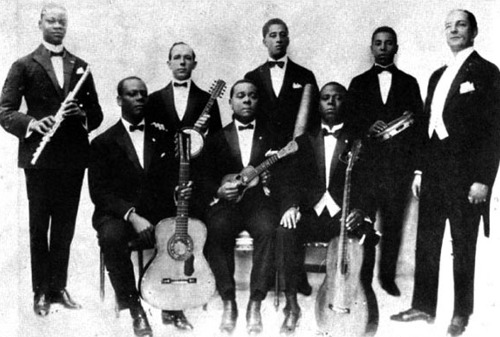
6. Os Oito Batutas: “Urubu”
We have heard the most prominent soloist in this supergroup before: choro composer and flautist Pixinguinha had already left his mark on Brazilian popular music in the 1910s. But when he joined seven other Black and mulatto choristas to form an eight-man group in 1919 so that a theater empresario would have an attraction in between showings of silent films, the result was a music that swung harder than traditional choro and even outpaced early samba: “Urubu” (the Guaraní word for vulture, and you can hear a wheeling, wing-fluttering flight in Pixinguinha’s flute) is just as modern, as dynamic, and as future-facing as any New Orleans jazz. In fact, musicians like Os Oito Batutas (the eight legends), demonstrate that the spirit of jazz was never exclusively a North American phenomenon.

7. Rosita Quiroga: “Sollozos”
Two legends in the field of Argentinean tango make their debut with this recording: Rosita Quiroga, the music’s first great woman singer, born in the lower-class milieu to which a cosmopolitan like Gardel only pretended; and Osvaldo Fresedo, the song’s composer, who when he begins to record in his own right will become perhaps the most emblematic tango bandleader of the decade, with a long career to follow. “Sollozos” (Sobs), with a lyric by the composer’s brother Emilio, is one of the great tango songs, uncovering the everyday pathos within the music’s slinky passion. Quiroga’s direct, unadorned vocal style refuses self-pity even as her words ask us to pity her, and the harmonium which opens the recording casts the plucked guitars which accompany her throughout in the light of eternity.

8. Carlos Gardel: “Alma porteña”
But as tango branched out into newly classed and gendered forms, Gardel the eternal cosmopolite continued to go from strength to strength. “Alma porteña” (Soul of Buenos Aires) is another of the deathless tango songs, in which the music itself is apostrophized as the cause, and cure, of all man’s ills. The mellifluous self-assurance in his baritone voice, the intricate backing of his accompanists Barbieri and Ricardo, and the swooping, tantalizing melody from Vicente Greco, who had been writing and performing tangos since the early 1910s, make a dazzling, almost overwhelming display of what I think of as Baroque tango, tango at its most self-important, self-mythologizing, and capital-r Romantic. If tango is une force qui va and Gardel is its prophet, why should we ever ask for anything more quotidian?

9. Bessie Smith: “Baby Won’t You Please Come Home Blues”
Three long years after the record companies learned that there was a market for “race” (for which see blues) records, the most famous and well compensated blues singer on the Black vaudeville circuit finally signed a contract with Columbia to cut her first records, accompanied on piano by early jazz pianist and empresario Clarence Williams, who had published (and supposedly co-wrote) this song. Its co-composer, Charles Warfield, later complained that he was cheated, which was probably true enough: music labels had much to learn from sheet-music publishers on how to screw over their talent. But the song itself is just a trifle: what makes it stick is Bessie Smith’s full-lunged performance, too self-possessed to be melodramatic about missing her lover, but too serious about her heartbreak to treat it flippantly either.

10. Ma Rainey with Lovie Austin and Her Blues Serenaders: “Barrel House Blues”
The blues singer who taught Bessie Smith to perform in public, and whose popular performances since the early 1900s in medicine shows, minstrel shows, and vaudeville had no doubt influenced white singers from Sophie Tucker to Marion Harris, also cut her first records for Paramount in 1923, at the age of forty-one. Accompanied by Chicago-based pianist and composer Lovie Austin and her hot jazz band, Rainey sings three verses that mock at Prohibition while reinforcing her own status as the elder stateswoman of the blues: the “Papa” of the song is presumably is Will Rainey, her husband, manager, and one-time partner, while “Mama” is herself, a creature of voracious appetite whose addiction to port, sport, gin, and “outside men” is a thorough rejection of a respectability that couldn’t touch her.

11. Esther Bigeou with Piron’s New Orleans Orchestra: “West Indies Blues”
Anglo-Caribbean music has not appeared in these pages since 1915, but it didn’t go unheard, nor was its influence insignificant. “West Indies Blues” was written by the great Black jazz songwriter Spencer Williams, with funning lyrics by Edgar Dowell, in the wake of Jamaican-born Pan-African Black separatist Marcus Garvey’s conviction on trumped-up charges of mail fraud: the broad dialect Esther Bigeou, a New Orleans native, uses to caricature West Indian speech is, at this remove, indistinguishable from the Coon dialects white songwriters had been putting in the mouths of US-born Blacks for generations. Even so, the sheet music was subtitled “a calipso,” and though it’s not proper Trinidadian calypso, it’s played by people who have heard it: Armand Piron’s orchestra was one of the foremost Creole bands of New Orleans.
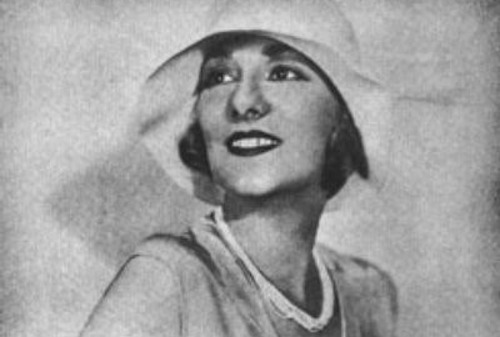
12. Marion Harris: “Who’s Sorry Now?”
As the genuine articles began to take their rightful place before the recording horn, the white women whose imitations of blues shouters had made the racist recording market safe for the blues began to move into more genteel forms of music-making, where Black women presumably couldn��t follow. (We’ll see about that.) Marion Harris, a constant presence here since 1916, has never sounded more polished and inexpressive—which is to say, whiter—than when warbling this ditty by dilettante composer Ted Snyder (who we won’t see again) and Tin Pan Alley lifers, lyricists Bert Kalmar and Harry Ruby (who we will). A song of vindictive triumph paced like a parlor ballad, it retained enough kick thirty-five years later to jumpstart the career of a teenager who sang like a grown woman.
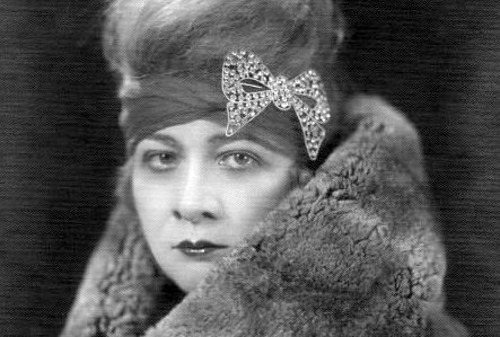
13. Sophie Tucker: “You’ve Gotta See Mamma Ev’ry Night (Or You Can’t See Mamma At All)”
Of course, La Tucker never followed the trends for white women singers. Now in her mid-thirties, she had built too firmly on a foundation of Coon shouting to move blithely into sweet girlish Tin Pan Alley fluff: but raucous faux-blues Tin Pan Alley fluff would do just as well. “You’ve Got to see Mamma” was written by popular hack Con Conrad (empresario Billy Rose is credited on lyrics), and in general outline it’s a good imitation of contemporary Black women’s songs, slightly saucy, humorously aggressive towards a wayward lover, and firmly self-respecting. But there’s no actual blues structure or emotion to it, which makes it all the better as a cloak for the indeterminately-raced Tucker to wrap herself in: big and brassy, but ultimately respectful of show-biz and social convention.
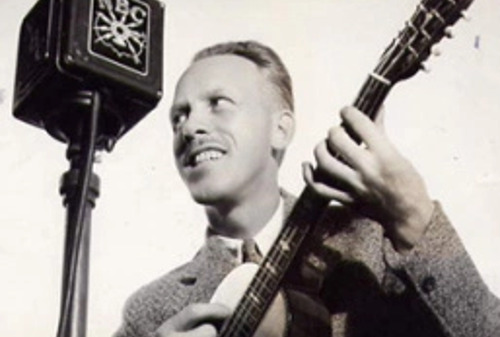
14. Wendell Hall: “It Ain’t Gonna Rain No Mo’”
The ways in which the desiccated remains of minstrelsy were shaped and pounded into country music are a major part of the recording history of the 1920s. “Ain’t Gonna Rain” is considered a folk song (four years later, Carl Sandburg would suggest that it dates to the 1870s), but Hall, a Midwestern vaudevillian who performed under the legend “The Red-Headed Music Maker,” punches out the verses, with nonstandard vocabulary and Southern rural hokum straight out of Uncle Remus, in a minstrel-inflected screech and yowl, a sound which would migrate into the “high lonesome” style which will characterize honky-tonk. But he’s also very much of his time: his instrument was not the banjo but the ukulele, the portable if not particularly versatile instrument which gave a fizzy, irrepressible soundtrack to the 1920s.
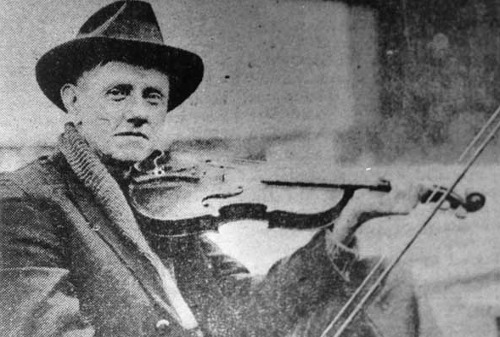
15. Fiddlin’ John Carson: “The Old Hen Cackled and the Rooster’s Gonna Crow”
Après Eck, le deluge: country fiddlers were still major entertainers in the rural communities where they set and called the dances, and as the South urbanized, they grew into bigger stars thanks to old-time fiddling conventions. The fifty-something Carson, of Atlanta, was hot enough stuff that he was a local fixture on the new medium of radio and appeared in newsreels. A sharp-eyed Atlanta distributor cajoled Okeh’s talent scout Ralph Peer into recording him in a rare acoustic-era location recording, a makeshift studio set up in an empty Atlanta storefront. Peer wasn’t happy with the results (he’d do better later), but the record, “Old Hen” b/w “Little Old Log Cabin in the Lane” (see 1907), sold out at the next convention. No hero, as we’ll see, Carson nevertheless lasted.
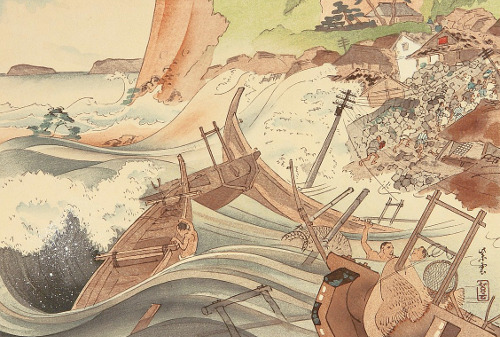
16. Asako Tanabe: “Sendo kouta”
As country music slowly pushes its way onto record, so too does the music frequently compared to it: Japanese enka, which (like country) originated in a specific milieu but has since broadened to mean any vaguely folkloric or traditional popular music. I’ve been unable to learn anything about the singer attributed here: 田辺朝子 is a common enough name that basic online searches are useless. But 船頭小唄 (often translated as “Ferryman’s Song”) was a major musical touchstone of the era, a street song which borrowed the melody of a Shinpei Nakayama composition. It became infamous in the wake of the Great Kanto Earthquake, said to have been predicted in the haunting, death-obsessed lyrics. A sentimental 1923 film of the same title inspired multiple recordings; this is the one posted to YouTube.

17. Mounira al-Madiyyah: “Asmar malak ruhi”
1923 was the first full year of nominal Egyptian independence from the British “protectorate” which had begun in 1882 and was formalized during the War to break Ottoman power. Although the British occupation would not be entirely ended until 1953, the promulgation of the first constitution and the convention of the first parliament in Cairo is worth commemorating here, with the voice of the first Muslim woman in the modern era to come to prominence as an entertainer in Egypt: before her (as throughout North Africa and the Middle East), the profession was limited to Jewish and Christian women. أسمر ملك روحي was one of her signature songs, one that has had long echoes in Egyptian light-entertainment history: “Dark King of My Soul” is one way to translate the title.

18. Mohammad el-Wahab: “Ma niish bahebbek”
Egyptian popular music was still only just being born: the September 1923 death at the age of 31 of café singer and musical-theater composer Sayed Darwish, whose melodies (some of which we will hear in future) borrowed Western structures and sometimes instrumentation in a break with classical Arabic formulas, is a useful demarcation point. Mohammad el-Wahab was a friend and close collaborator with Darwish in his last years, and would become perhaps the most important Egyptian popular musician of the twentieth century, but one. This early song, a light taqtuqa from the kind of genial musical romantic comedy which would come to form the backbone of the West and South Asian film industry, is an anti-love song performed in character as a rascal protesting (too much) that he only loves himself.

19. Marika Papagika: “Opou dis dio kyparissia”
The Anatolian Greek singer Marika Papagika was by now more or less the undisputed queen of the ex-Ottoman diaspora in New York City, despite continued challenges from Kiria Koula. Within the next year or so she would even open the first café-aman (and behind authority’s back, a speakeasy) in the Western hemisphere; but here, with her husband on cimbalom and other immigrant musicians on violin, cello, and percussion, she sings a song which takes its title from the Greek folk air “When You See Two Cypresses,” but hares off in other directions in the singing. It’s called a Zeïmpekiko (Anatolian Greek folk dance) on the label, but scholars, noting the modern fusions which New World residence has imparted to Papagika’s musical ecosystem, have called it an early example of rebetiko.
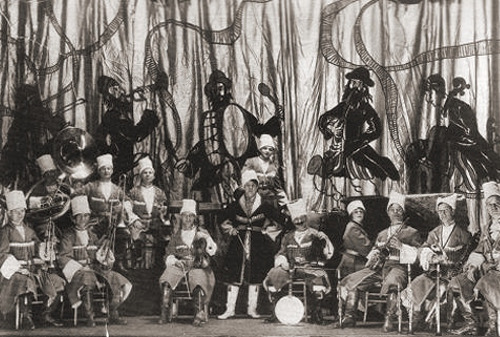
20. Naftule Brandwein’s Orchestra: “Doina and Nachspiel”
As we move further into the 1920s, the number of great recordings by the Eastern European Jewish artists who brought what we now call klezmer to the tenements of New York City will slowly decrease. Partly this is because of rapid assimilation and the inroads made by Jewish artists into mainstream US culture: the next generation of talented Jewish musicians were more likely to aspire to be Gershwin or Brice than Brandwein or Picon. But also, beginning in 1924, the country’s open (to Europeans) immigration policy was for the first time given a permanent numerical limit, heavily restricting (as it meant to) the number of new Jewish immigrants to the United States. There will be more klezmer records in future, but let this be a valediction for the first generation.

21. Isa Kremer: “Dwie Guitarre”
But there was a whole constellation of global Jewish culture which the policies set by a know-nothing Congress could not touch. Isa Kremer, the great Russian Jewish soprano, was born to bourgeois parents in what is now Moldova, but was publishing revolutionary poetry in Odessa as a teenager. She debuted as an opera singer in Italy; within a few years, she included Yiddish folk songs in her concert repertoire, supposedly the first woman to do so. The Russian Revolution left her without a home (her family had backed the moderates), and her peripatetic concert schedule brought her to the United States in 1922, where she was acclaimed by Jewish and non-Jewish audiences alike. This selection of Russian romans or “gypsy” music is illustrative of her clear voice and lively style.
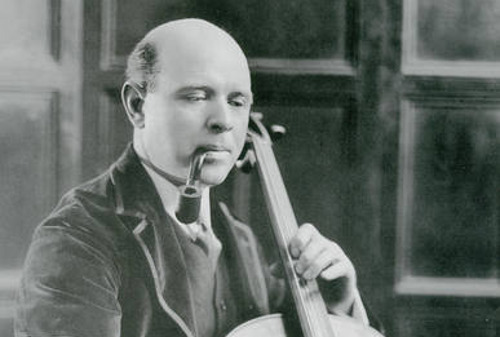
22. Pau Casals: “Kol Nidrei”
Another example of Jewish music having entered the concert canon: the German (Protestant) composer Max Bruch had composed this piece for cello and orchestra in 1880, the melody of the first section based on the Hebrew prayer recited during the evening service on Yom Kippur and that of the second on one of Isaac Nathan’s 1815 settings for Byron’s Hebrew Melodies. (Gentiles appropriating Jewish art and being reappropriated by Jews in turn has a long history.) The great Catalan cellist Pau Casals rendered it sensitively, accompanied only by Edouard Gendron on piano, for Columbia in 1923. In those years Casals was the preeminent cellist in Europe, recording in France and conducting an orchestra in Barcelona. An ardent Republican, he went into self-imposed exile when Franco came to power, and never returned.
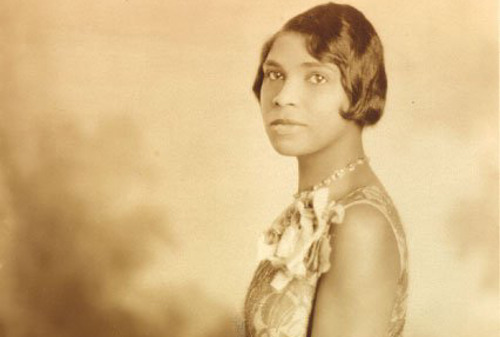
23. Marian Anderson: “Deep River”
Only two years out of high school, and still a decade out from becoming world-famous as the greatest African-American contralto of the twentieth century, Marian Anderson recorded her first sides in December of 1923. Her repertoire even then included this Harry T. Burleigh arrangement of a classic spiritual, which would become one of her signature songs. “Deep River,” with a stark simplicity of melody and lyric which contain entire implied universes of emotion and history, is one of the essential, irreducible elements of Black American art. Anderson’s early low, throbbing performance, recorded the same year that hot jazz and the blues fully came into their own on record, after some fifty years of what historians call the Nadir, an era of horrific violence and terrorism toward Black citizens, still resounds today.
5 notes
·
View notes
Text
La aventura del tango: El Poeta Elegido
La aventura del tango: El Poeta Elegido
Antonio Pippo Pedragosa Columnista ¿Por qué la voz de Gardel cambia, tanto para el oído educado musicalmente como para el del común de la gente, a partir de 1925? Es otra curiosidad en la que poco bucean no sólo los fanáticos. La razón es sencilla y, empero, no tan conocida. Los primeros discos de Gardel, como de sus contemporáneos, se grabaron por el sistema llamado acústico. En realidad, era…

View On WordPress
#ANTONIO PIPPO MEJOR COLUMNISTA DEL AÑO 2021#Argentina#CARLOS GARDEL#CELEDONIO ESTEBAN FLORES#COLUMBIA RECORDS#EL POETA ELEGIDO#FONOAUTOGRAFO#La aventura del Tango por Antonio Pippo#LEON SCOTT#lomasleido#LOS PRIMEROS DISCOS#ROSITA QUIROGA#URUGUAY
0 notes
Video
youtube
Oime Negro - Tango de Rosita Quiroga
0 notes
Text
APAV le comunicó a la intendenta que cerrará el refugio de animales
Miembros de la Asociación Protectora de Animales de Villaguay ( APAV) se entrevistaron con la Intendente, Claudia Monjo, a fin de comunicarle el inminente cierre del refugio con que cuenta esa asociación. Culminación de contrato de alquiler, costos y otros inconvenientes son los principales motivos de la decisión. Las integrantes de APAV, quienes trabajan de forma voluntaria en esta tarea, creyeron importante hacerle saber esta decisión a la Intendente, ya que el municipio realiza un aporte mensual en ayuda de esta Institución, hecho que agradecieron Poly Quiroga y Rosita Acosta. En la oportunidad acordaron continuar trabajando juntos, Municipalidad y APAV en la educación y concientización acerca de la tenencia y adopción responsable de animales, en los hogares. La idea es continuar con una propuesta educativa e integral con Salud y Cultura para trabajar en los barrios y escuelas. Además continuar apoyando la tarea, necesaria, del Castrador móvil, servicio gratuito que presta el municipio y que tanto ha contribuido a la no proliferación de animales. También se evaluó la posibilidad de instalar un nuevo quirófano fijo en algún espacio municipal, para que sea un punto más de ayuda al control de natalidad de perros y gatos en la ciudad. Por otra parte se mostraron muy satisfechas por llegar a esta instancia y haber podido dar en adopción a todos los animales que había en el refugio, hecho que les brinda alivio y tranquilidad en este momento especial. Por último las integrantes de esta Asociación, agradecieron la buena predisposición del Ejecutivo municipal, y en particular de Claudia Monjo, quien ha demostrado siempre especial interés y sensibilidad, ante esta problemática y la voluntad de continuar trabajando juntos, desde otra perspectiva, en la educación para ser tenedores responsables de mascotas y no hacer abandono de animales, además de la importancia de mantener los cuidados y el control de los mismos por el bien de todos en la comunidad. (Fuente: Municipalidad de Villaguay). via Blogger http://diariovillaguay.blogspot.com/2017/07/apav-le-comunico-la-intendenta-que.html
0 notes
Text
un Día como Hoy 16 de Enero Dialogos con la Historia
Artículo de Dialogos con la Historia en http://dialogosconlahistoria.com/dia-hoy-16-enero/
un Día como Hoy 16 de Enero
1896 Nace en Buenos Aires la personal cantante de canciones criollas y tangos, Rosita Quiroga. Falleció en Buenos Aires en 1984.
Día Internacional de The Beatles
1493 Cristóbal Colón reconoce varias islas Bahamas, la zona oriental de Cuba y el norte de Haití.
1547 Iván el terrible se hace coronar Zar de todas las Rusias.
1556 Carlos I de España cede a su hijo, el futuro Felipe II, la corona de Castilla y Aragón con todas sus posesiones.
1605 En Madrid (España) se publica la primera edición de El ingenioso hidalgo don Quijote de La Mancha.
1749 Nace Vittorio Alfieri, poeta italiano.
1850 Nace “Pierre Loti” (Luis M. J. Viaud), escritor francés.
1853 Nace Andre Michelin, industrial francés.
1862 Se publica “La Vida de Jesús”, de Ernest Renan.
1884 Se decreta en Bolivia la imposición por la fuerza de un empréstito, bajo pena de prisión.
1886 Muere Amilcare Ponchielli, compositor italiano.
1891 Muere Leo Delibes, compositor francés.
1891 Vencida en América del Norte la última sublevación de los indios sioux.
1901 Nace Fulgencio Batista, dictador cubano.
1902 Alemania obtiene la concesión para construir el ferrocarril Konia-Bagdad, en el Imperio otomano.
1905 Nace Ernesto Halffter, compositor español.
1906 Comienza la Conferencia sobre el destino de Marruecos, entre España, Francia, Alemania e Inglaterra.
1908 Grandes disturbios obreros en Chicago (Estados Unidos).
1911 Nace Eduardo Frei, político chileno.
1914 El poeta ruso Máximo Gorki, autorizado a regresar a su país tras ocho años de exilio.
1915 Revolución mexicana: el general Alvaro Obregón, al frente de sus fuerzas, entra en la capital.
1920 Entra en vigor en EEUU la “Ley Seca”, por la que se prohibía la venta y consumo de bebidas alcohólicas.
1920 Termina la Conferencia de Paz de París con la inauguración formal de la Liga de las Naciones.
1924 Nace Katy Jurado, actriz mexicana.
1928 Reunida en La Habana (Cuba) la VI Conferencia Interamericana, en la que participaron representantes de 21 Repúblicas.
1932 Nace Dian Fossey, zoóloga.
1933 Nace la escritora Susan Sontag.
1935 Nace el automovilista Anthony Joseph Foyt.
1939 Primera publicación de “Superman” en Historietas.
1941 Chile y Bolivia firman un pacto de no agresión.
1941 Federico Pinedo renuncia como ministro de Hacienda en Argentina.
1942 Muere la actriz Carole Lombard.
1944 Dwight D. Eisenhower, llega a Londres para ponerse al frente de las tropas que invadirán Europa.
1946 El niño “prodigio” español Arturo Pomar gana el torneo de ajedrez de Londres.
1956 El Islam se convierte en la religión de Egipto por mandato constitucional.
1957 Fallece Arturo Toscanini, director de orquesta italiano.
1959 Dimisión del primer ministro cubano, José Miró Cardona, sustituido por Fidel Castro.
1962 Un golpe de Estado en la República Dominicana depone al presidente, Joaquín Balaguer, e instaura una Junta de Gobierno por 48 horas.
1963 Fallece Gilardo Gilardi, compositor argentino.
1964 Se estrena en Broadway “Hello, Dolly!”.
1969 Las naves Soyus 4 y 5 hacen cambio de tripulaciones en el espacio.
1969 El estudiante Jan Palach se quema vivo en la plaza Wenzel, de Praga, en protesta por la ocupación soviética de Checoslovaquia y la supresión de las libertades individuales.
1970 Grandes manifestaciones en La Paz para apoyar al presidente boliviano, Alfredo Ovando, contra el que la CIA y compañías petrolíferas estadounidenses habían urdido un complot.
1970 Fallece Francisco Gutiérrez Cossío, pintor español.
1971 En Chile, fracasa un atentado para asesinar al presidente socialista Salvador Allende.
1973 Sale al aire la última edición de “Bonanza”, luego de 440 emisiones durante 13 años y medio.
1974 Nace Kate Moss, modelo británica.
1975 Se firma en Lisboa el acuerdo para la independencia de Angola.
1979 El Shah Mohammed Reza Pahlevi abandona Irán.
1982 Fallece Ramón J. Sender, escritor español.
1984 Arrestan en Barbados a Paul y Linda McCartney por tenencia de marihuana.
1985 El Gobierno israelí decide retirar sus tropas del Líbano en tres fases.
1987 Dimite Hu Yaobang, secretario del Partido Comunista chino, y le sustituye Zao Ziyang.
1987 Paracaidistas amotinados en la base aérea de Taura secuestran unas horas al presidente ecuatoriano, León Febres Cordero, y piden la libertad del general golpista Frank Vargas, a lo que accedió el Gobierno.
1991 En Irak, George Bush ordena el comienzo de la Guerra del Golfo con la operación “Tormenta del Desierto”. Inicio de los bombardeos aéreos sobre Bagdad.
1992 Firma de los acuerdos de paz entre el Gobierno y la guerrilla, que ponen fin a doce años de guerra en El Salvador.
1996 Derrocado el presidente de Sierra Leona, capitán Valentine Strasser, en un golpe de Estado dado por el “número dos” del régimen, el también capitán Julius Maada Biol
2003 Desde Cabo Cañaveral despega el transbordador espacial Columbia, que se destruirá en la reentrada 16 días más tarde.
2004 Muere Melchor Ángel Posse, médico y político argentino.
2014 Muere Russell Johnson, actor estadounidense.
#16 de Enero#Alfredo Ovando#Alvaro Obregón#Amilcare Ponchielli#Andre Michelin#Anthony Joseph Foyt#Arturo Pomar#Arturo Toscanini#Bonanza#Carole Lombard#Columbia#Cristóbal Colón#Dian Fossey#don Quijote de La Mancha#Dwight D. Eisenhower#Eduardo Frei#efemerides#Ernest Renan#Ernesto Halffter#Federico Pinedo#Fidel Castro#Francisco Gutiérrez Cossío#Fulgencio Batista#George Bush#Gilardo Gilardi#Hu Yaobang#Iván el terrible#Jan Palach#Joaquín Balaguer#José Miró Cardona
0 notes
Audio
Rosita Quiroga & Enrique Cadícamo - Apología tanguera
2 notes
·
View notes